Nature has evolved remarkable adaptations across species, but few rival the precision engineering of the beaks found in certain bird species. Among these avian marvels, one stands out for its extraordinary cutting ability—a beak so sharp it can slice through flesh with greater precision than medical instruments designed for surgery. This remarkable adaptation represents one of evolution’s most refined solutions for survival, allowing its owner to perform intricate feeding behaviors with astonishing accuracy. As we explore the unique characteristics of this extraordinary bird, we’ll discover how its razor-sharp beak functions, why it evolved, and the fascinating ecological role it plays in its natural habitat.
The Shrike: Nature’s Butcher Bird
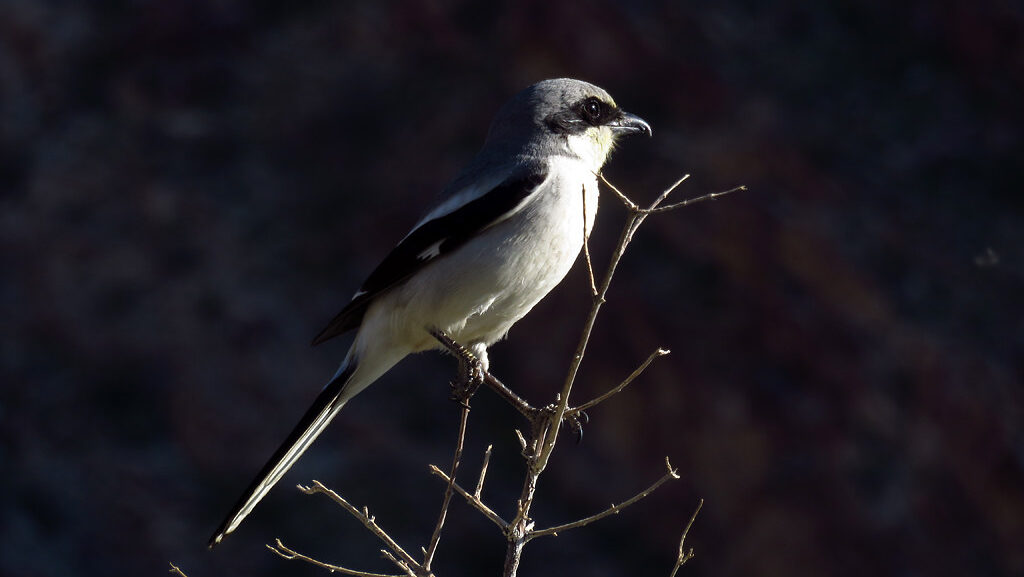
The bird possessing this surgical-grade beak is the shrike, often referred to as the “butcher bird” for its macabre feeding habits. Shrikes comprise about thirty species distributed across Africa, Europe, Asia, and North America, with the loggerhead and northern shrikes being the most common in North America. Despite their small size—comparable to a robin—these birds possess predatory skills that rival those of raptors like hawks and eagles. Their seemingly innocent appearance belies their nature as efficient predators that have evolved specialized adaptations for a carnivorous lifestyle without the benefit of the powerful talons possessed by other predatory birds. The shrike’s reputation as nature’s surgeon stems from its ability to make precise incisions in its prey with uncanny accuracy.
Anatomical Precision of the Shrike’s Beak

The shrike’s beak is a masterpiece of evolutionary design, featuring a sharp, hooked tip with a specialized tomial tooth—a notch on the upper mandible that creates an exceptionally sharp cutting edge. This adaptation allows the beak to function similar to a pair of medical scissors, capable of severing the spinal cord of prey with a single, precise bite. Structural analysis of the shrike’s beak reveals a density and composition that maintains its sharpness through regular use without significant dulling. The beak’s cutting edge has been measured to have a radius of curvature of approximately 1-2 micrometers at its sharpest points, comparable to surgical scalpels which typically have edge radii of 2.5-5 micrometers. This remarkable sharpness enables the shrike to perform what amounts to microsurgery on its prey, targeting specific anatomical weak points with extraordinary precision.
Hunting Techniques of the Surgical Predator
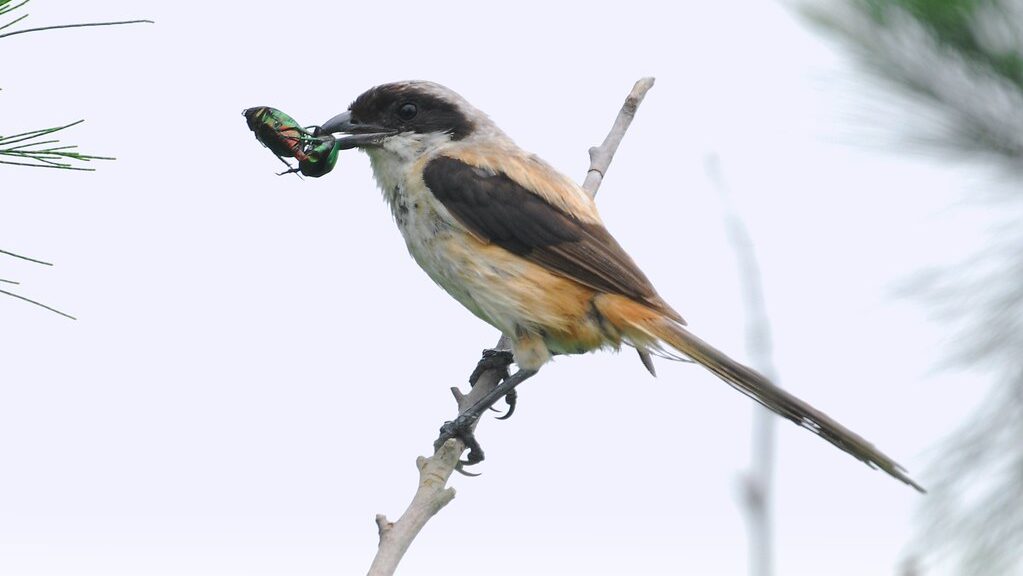
Shrikes employ their razor-sharp beaks with tactical brilliance during hunting expeditions. Unlike raptors that rely on powerful talons to catch and kill prey, shrikes use their beaks as their primary weapon, delivering a precise strike to the nape of their victim’s neck to sever the spinal cord or crush the vertebrae. This killing technique is remarkably similar to the cervical dislocation method used in laboratory settings for humane euthanasia of small animals. Shrikes typically perch in elevated positions, scanning their surroundings before swooping down to capture prey that can include insects, small reptiles, mammals, and even other birds. The precision of their attack is such that prey is often immobilized instantly, minimizing suffering and reducing the risk of injury to the shrike from struggling victims—an efficiency that would impress even medical professionals accustomed to surgical precision.
The Infamous Larder Behavior
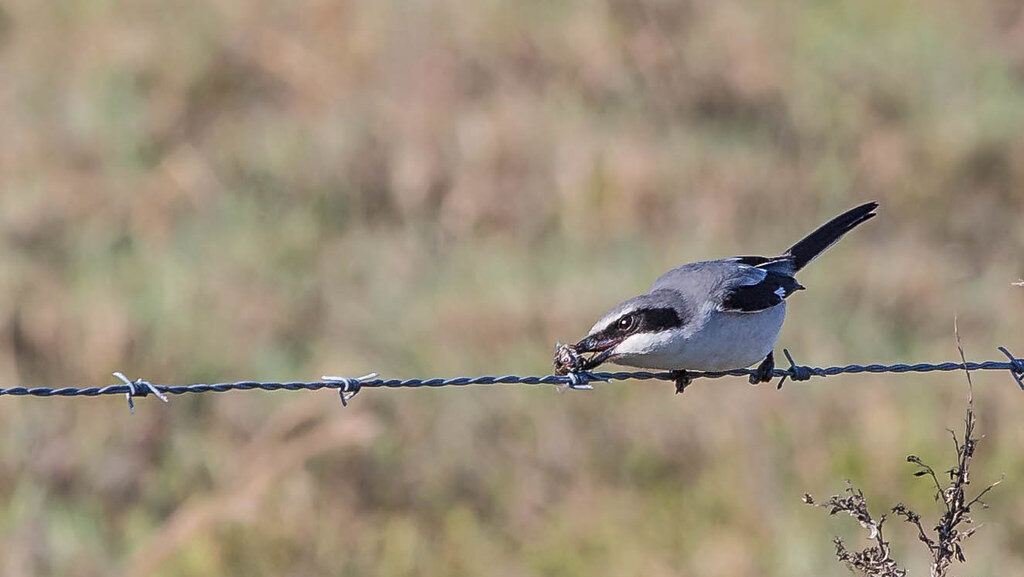
Perhaps the most notorious behavior associated with shrikes is their habit of impaling prey on thorns, barbed wire, or other sharp objects—creating what naturalists call “larders” or “pantries.” This unique behavior showcases the extraordinary utility of their sharp beaks, as the birds use these natural skewers as substitutes for the talons they lack. The impaling serves multiple purposes: it securely holds prey while the shrike uses its beak to tear smaller, manageable pieces; it stores food for future consumption, particularly important during breeding season or harsh weather; and in some cases, it allows toxins in poisonous prey to break down over time. Some researchers have observed that male shrikes with more impressive larders tend to attract more mates, suggesting this behavior may also serve as a display of hunting prowess and territorial quality. The precision with which shrikes impale their prey demonstrates remarkable control and accuracy of their beak’s cutting ability.
Evolutionary Development of the Shrike’s Beak
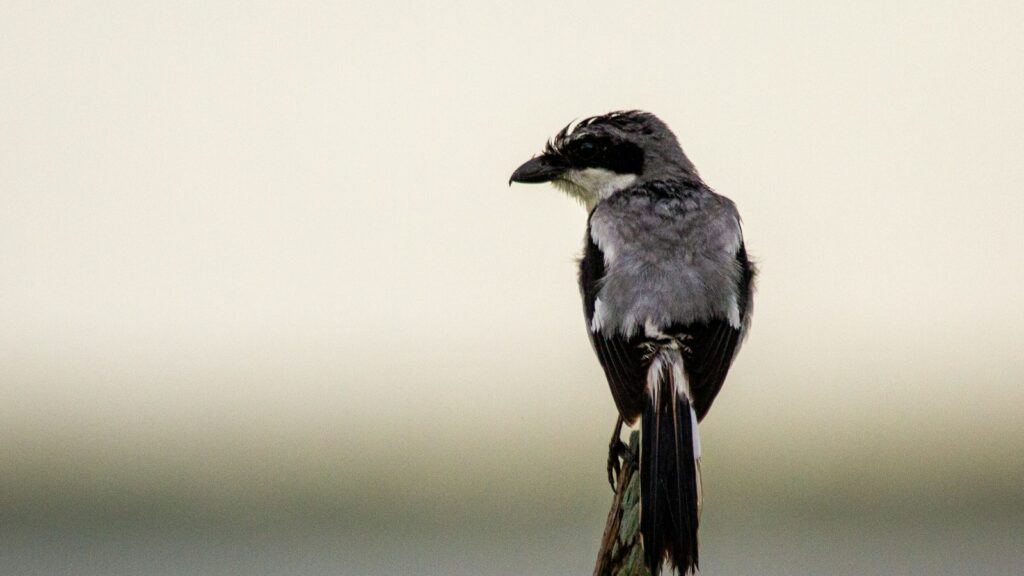
The evolution of the shrike’s remarkably sharp beak represents a fascinating case of convergent evolution with raptors, despite shrikes belonging to the order Passeriformes (perching birds). The selective pressures that drove this adaptation relate primarily to the bird’s carnivorous diet and the absence of powerful talons that characterize other predatory birds. Fossil evidence suggests that ancestral shrikes gradually developed the hooked beak and tomial tooth over millions of years as they transitioned toward a more predatory lifestyle. Genetic studies have identified several key genes responsible for beak morphology in shrikes, including some that regulate keratin deposition and beak curvature. The evolutionary refinement of the shrike’s beak demonstrates nature’s ability to craft specialized tools that rival human engineering, resulting in a cutting implement that, relative to the bird’s size, outperforms even the finest surgical instruments designed by humans.
Comparing the Shrike’s Beak to Medical Scalpels

When directly compared to medical scalpels, the shrike’s beak shows remarkable similarities in function despite vast differences in origin. Modern surgical scalpels typically have blade edges with a radius of curvature between 2.5-5 micrometers and are made from hardened stainless steel or carbon steel, sometimes enhanced with ceramic or diamond coatings. The shrike’s beak, composed primarily of keratin—the same protein found in human fingernails—achieves comparable or superior sharpness with edge radii measured between 1-2 micrometers at its cutting surfaces. While scalpels require regular replacement or resharpening, the shrike’s beak continuously grows and maintains its edge through normal use and self-sharpening properties. Perhaps most impressively, the shrike’s beak accomplishes this surgical precision while also being durable enough to withstand the stresses of capturing and processing prey in varied environmental conditions—a versatility that human-engineered surgical tools have yet to match.
Different Shrike Species and Their Specialized Beaks

The family Laniidae includes approximately thirty species of shrikes, each with subtle variations in beak morphology adapted to their specific habitats and prey preferences. The great grey shrike (Lanius excubitor), one of the larger species, possesses a particularly robust beak capable of dispatching small vertebrates including mice and lizards. The red-backed shrike (Lanius collurio) has a more moderately sized beak optimized for insect predation but still capable of handling small vertebrates. The loggerhead shrike (Lanius ludovicianus), common in North America, has evolved a beak with excellent cutting properties and is known for its ability to decapitate prey or sever spinal cords with remarkable precision. The tropical boubou (Laniarius aethiopicus), sometimes classified within the shrike family, has developed a particularly powerful bill for its size, capable of cracking through the exoskeletons of large insects with surgical precision. These variations demonstrate how natural selection has fine-tuned the shrike’s beak across species to maintain optimal cutting ability while adapting to specific ecological niches.
The Biomechanics of the Shrike’s Cutting Strike
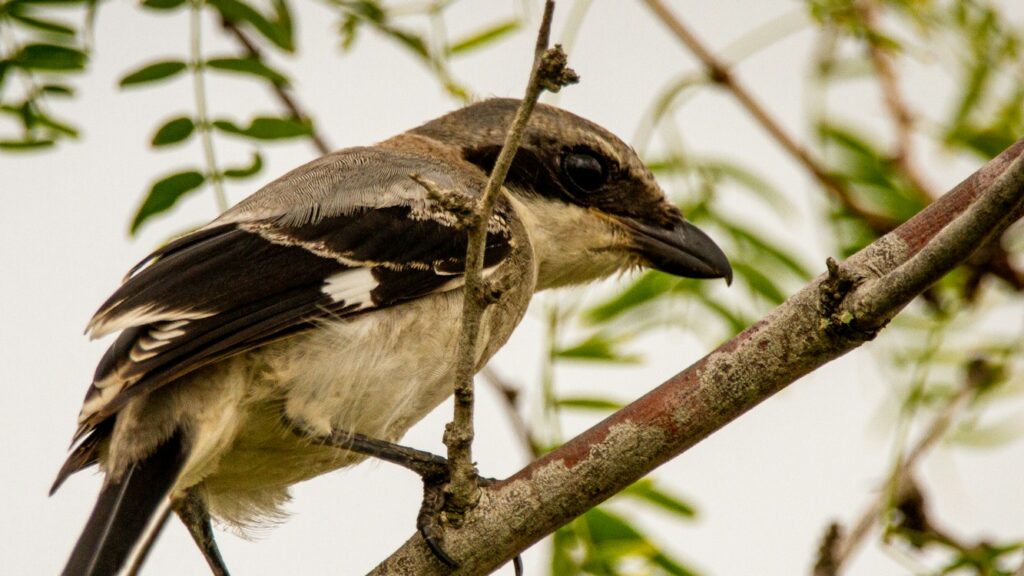
The exceptional cutting ability of the shrike’s beak relies not only on its sharpness but also on the sophisticated biomechanics of the bird’s strike. High-speed photography has revealed that shrikes deliver their killing bite with remarkable speed, accelerating their head forward at rates exceeding 20 meters per second squared. The muscles controlling the shrike’s neck and jaw generate forces that, when scaled to body size, are comparable to those produced by specialized medical instruments. The bird’s nervous system coordinates this attack with millisecond precision, targeting vulnerable points on prey anatomy such as the cervical vertebrae. Engineers studying the biomechanics of the shrike’s strike have noted that the bird achieves optimal force transfer by striking prey at specific angles that maximize the effectiveness of the beak’s cutting edge—a principle similar to that employed in the design of surgical cutting tools. This combination of speed, force, and precision makes the shrike’s attack one of nature’s most efficient killing mechanisms, rivaling the engineered precision of medical devices.
Ecological Role of the Surgical Predator
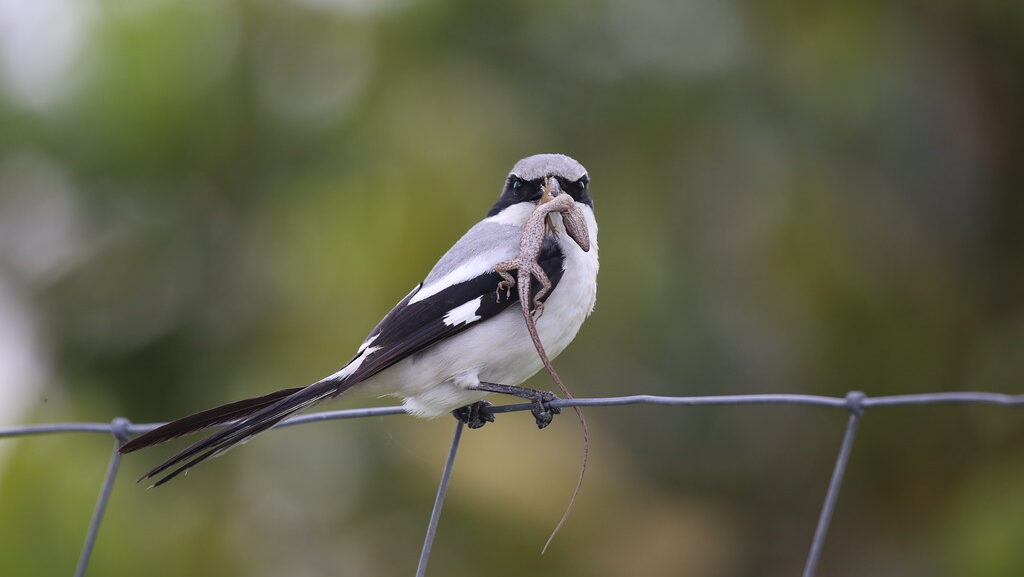
The shrike’s surgical precision plays a crucial role in the ecological communities where these birds reside. As mesopredators—middle-ranking predators in their food webs—shrikes help regulate populations of small mammals, reptiles, and insects, preventing potential outbreaks of certain species. Their ability to hunt and consume venomous prey, including scorpions and poisonous insects that other predators avoid, gives them a unique ecological niche. Research has shown that shrikes can influence the behavior of prey species, causing them to modify their activity patterns and habitat use to avoid these precision hunters. In agricultural settings, shrikes provide valuable ecosystem services by controlling pest populations, with studies estimating that a single breeding pair of loggerhead shrikes can remove thousands of grasshoppers and other insect pests during a breeding season. The surgical efficiency of their hunting minimizes energy expenditure and maximizes nutritional gain, allowing shrikes to thrive in environments where other predators of similar size might struggle.
Conservation Status and Threats
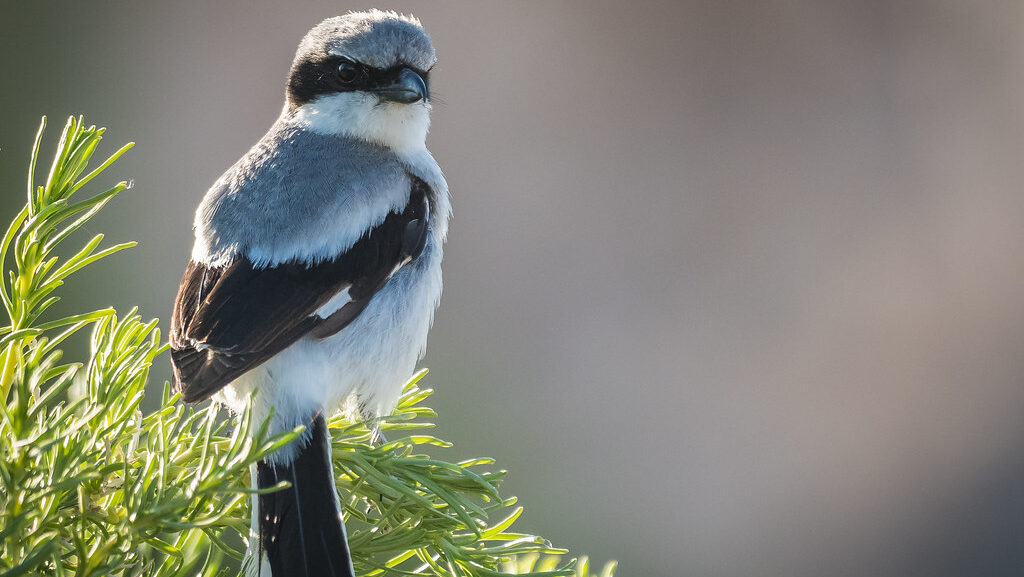
Despite their remarkable adaptations, many shrike species face significant conservation challenges in the modern world. The loggerhead shrike has experienced steep population declines across North America, with estimates suggesting a more than 70% reduction since the 1960s. Habitat loss represents a primary threat, as agricultural intensification and urban development eliminate the open grasslands with scattered trees and shrubs that shrikes require for hunting and nesting. Pesticide use poses another serious challenge, not only reducing prey availability but potentially causing secondary poisoning when shrikes consume contaminated insects. Climate change is altering the timing of prey availability, creating potential mismatches with the shrikes’ breeding cycles. Several shrike species, including the San Clemente loggerhead shrike and the Archer’s lark-like bush-shrike, are now critically endangered, highlighting the vulnerability of these surgical predators despite their specialized adaptations. Conservation efforts focusing on habitat preservation and restoration offer the best hope for ensuring the continued existence of these remarkable birds.
Cultural Significance and Historical References

The shrike’s extraordinary hunting abilities and habit of impaling prey have made these birds culturally significant across different societies throughout history. In European folklore, shrikes were often associated with negative omens due to their butchering behavior, earning names such as “nine-killer” based on the belief that they would kill nine creatures before eating any. Medieval naturalists documented the shrike’s impaling behavior with fascination, often interpreting it through the lens of morality tales. In Japanese culture, the bull-headed shrike (Lanius bucephalus) features in traditional haiku poetry as a symbol of both beauty and ferocity. Native American tribes, particularly those in regions where loggerhead shrikes were common, incorporated these birds into their mythology, often portraying them as clever tricksters or as symbols of precision and efficiency. The shrike’s surgical precision has more recently entered scientific literature as researchers draw parallels between the bird’s natural abilities and human medical technology, highlighting how nature’s solutions often precede and sometimes surpass human innovation.
Studying Shrikes: Research Challenges and Discoveries

Scientific investigation of the shrike’s remarkable beak presents unique challenges that have required innovative research approaches. Capturing the moment of a shrike’s killing strike requires sophisticated high-speed photography equipment capable of recording at several thousand frames per second, as the actual strike occurs in mere milliseconds. Measuring the precise sharpness of the beak involves electron microscopy and specialized materials science techniques adapted from industrial blade testing protocols. Field researchers studying shrike hunting behavior must contend with the birds’ natural wariness and tendency to abandon observation areas when they detect human presence. Despite these challenges, recent research has yielded fascinating discoveries about shrike cognition, including evidence that these birds can remember specific locations of prey abundance for extended periods and can adjust their impaling techniques based on prey type and available substrates. Neurobiological studies have revealed specialized brain regions dedicated to visual processing and motor control that enable the shrike’s surgical precision, providing insights into the evolution of predatory behavior in birds.
Inspiration for Biomimetic Technology

The extraordinary cutting efficiency of the shrike’s beak has not escaped the attention of engineers and designers seeking inspiration from nature. Several medical device companies have studied the shrike’s beak morphology when developing new surgical instruments, particularly those requiring minimal tissue damage and precise incisions. The self-sharpening properties of the shrike’s beak, maintained through normal use rather than requiring external sharpening, have influenced the development of self-maintaining cutting edges in various industries. Robotics engineers working on precision gripping and manipulation systems have incorporated principles observed in the shrike’s hunting technique, particularly the combination of force control and positional accuracy. Material scientists have analyzed the composition and structure of the keratin in shrike beaks to inform the development of new bio-inspired cutting materials that maintain sharpness without metallic components. This cross-disciplinary interest in the shrike’s adaptations exemplifies the growing field of biomimicry, where nature’s time-tested solutions inform human technological innovation.
Conclusion
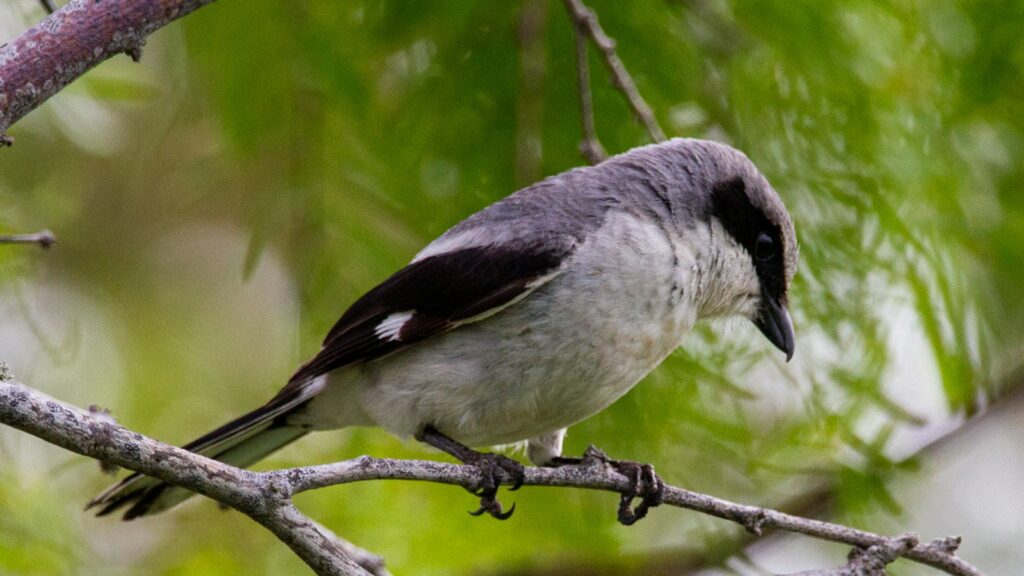
The shrike stands as one of nature’s most remarkable examples of evolutionary precision engineering—a small songbird equipped with a beak that rivals surgical instruments in its cutting ability. This extraordinary adaptation allows these birds to occupy a unique ecological niche as efficient predators despite lacking the powerful talons of raptors. The shrike’s surgical beak, combined with its notorious impaling behavior, specialized hunting techniques, and remarkable biomechanics, demonstrates how natural selection can produce solutions that match or exceed human technological achievements. As we continue to study these fascinating birds, they not only teach us about the wonders of adaptation but also provide inspiration for innovations in fields ranging from medicine to materials science. In a world increasingly dominated by human technology, the shrike reminds us that some of the most sophisticated tools have been perfected through millions of years of evolution rather than human design.
